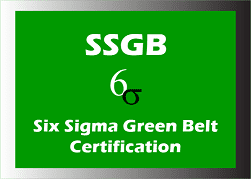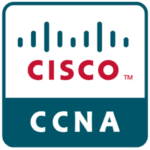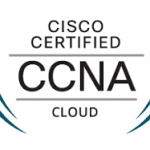Search for your desired courses here
Six Sigma Green Belt Certification Training
Overview of six sigma green belt certification:
Six Sigma green belt Certification from ASQ is considered a mark of quality excellence in many industries. It helps you advance your career and boosts your organization’s bottom line through your mastery of quality skills. Becoming certified as a Six Sigma Green Belt confirms your commitment to quality and its positive impact on your organization, learn and get certified lean six sigma green,sigma green belt training, sigma green belt course from us. best six sigma green belt training in Dubai
zabeel offers live virtual and classroom training for sigma methodology, after successful completion will provide professional certification.
Learning Outcome:
- Allows you to become a specialist in process improvement and enhances your career’s standard and credibility.
- Those with any level of Six Sigma training earned more than those without any
- CSSGBs can assist their company in identifying current problems and their scope, and develop solutions to those problems.
- CSSGBs help achieve the much-needed process improvements leading to cost savings, higher quality, improved delivery, and increased profit margins.
- Using Six Sigma approaches can improve an organization’s products or services to increase marketability.
- By employing a Certified Six Sigma Green Belt, a company will increase the organization's efficiency and utilization of resources.
Who needs the course?
The six sigma green belt certification operates in support of or under the supervision of a Six Sigma Black Belt, analyzes and solves quality problems, and is involved in quality improvement projects. A Green Belt is someone with at least three years of work experience who wants to demonstrate his or her knowledge of Six Sigma tools and processes.
Six Sigma Training – Detailed Course Content
I. Overview: Six Sigma and the Organization (13 Questions)
A. Six Sigma and Organizational Goals
- Value of Six Sigma Recognize why organizations use Six Sigma, how they apply its philosophy and goals, and the evolution of Six Sigma from quality leaders such as Juran, Deming, Shewhart, Ishikawa, and others. (Understand)
- Organizational goals and Six Sigma projects Identify the linkages and supports that need to be established between a selected Six Sigma project and the organization’s goals, and describe how process inputs, outputs, and feedback at all levels can influence the organization as a whole. (Understand)
- Organizational drivers and metrics recognize key business drivers (profit, market share, customer satisfaction, efficiency, product differentiation) for all types of organizations. Understand how key metrics and scorecards are developed and how they impact the entire organization. (Understand)
B. Lean Principles in the Organization
- Lean concepts Define and describe lean concepts such as theory of constraints, value chain, flow, and perfection. (Apply)
- Value stream mapping Use value stream mapping to identify value-added processes and steps or processes that produce waste, including excess inventory, unused space, test inspection, rework, transportation, and storage. (Understand)
C. Design for Six Sigma (DFSS) Methodologies
Road maps for DFSS
- Distinguish between DMADV (define, measure, analyze, design, verify) and IDOV (identify, design, optimize, verify), and recognize how they align with DMAIC. Describe how these methodologies are used for improving the end product or process during the design (DFSS) phase. (Understand)
- Basic failure mode and effects analysis (FMEA) Use FMEA to evaluate a process or product and determine what might cause it to fail and the effects that failure could have. Identify and use scale criteria, calculate the risk priority number (RPN), and analyze the results. (Analyze)
- Design FMEA and process FMEA Define and distinguish between these two uses of FMEA. (Apply)
II.Define Phase (23 Questions)
A. Project Identification
Project selection
- Describe the project selection process and what factors should be considered in deciding whether to use the Six Sigma DMAIC methodology or another problem solving process. (Understand)
Process elements
- Define and describe process components and boundaries. Recognize how processes cross various functional areas and the challenges that result for process improvement efforts. (Analyze)
Benchmarking
- Understand various types of benchmarking, including competitive, collaborative, and best practices. (Understand)
Process inputs and outputs
- Identify process input and output variables and evaluate their relationships using the supplier, input, process, output, and customer (SIPOC) model. (Analyze)
-
Owners and stakeholders
- Identify the process owners and other stakeholders in a project. (Apply)
B. Voice of the Customer (VoC)
Customer identification
- Identify the internal and external customers of a project, and what effect the project will have on them. (Apply)
Customer data
- Collect feedback from customers using surveys, focus groups, interviews, and various forms of observation. Identify the key elements that make these tools effective. Review data collection questions to eliminate vagueness, ambiguity, and any unintended bias. (Apply)
Customer requirements
- Use quality function deployment (QFD) to translate customer requirements statements into product features, performance measures, or opportunities for improvement. Use weighting methods as needed to amplify the importance and urgency of different kinds of input; telephone call vs. survey response; product complaint vs. expedited service request. (Apply)
C. Project Management Basics
Project charter
- Define and describe elements of a project charter and develop a problem statement that includes baseline data or current status to be improved and the project’s goals. (Apply)
Project scope
- Help define the scope of the project using process maps, Pareto charts, and other quality tools. (Apply)
Project metrics
- Help develop primary metrics (reduce defect levels by x-amount) and consequential metrics (the negative effects that making the planned improvement might cause). (Apply)
-
Project planning tools
- Use Gantt charts, critical path method (CPM), and program evaluation and review technique (PERT) charts to plan projects and monitor their progress. (Apply)
-
Project documentation
- Describe the types of data and input needed to document a project. Identify and help develop appropriate presentation tools (storyboards, spreadsheet summary of results) for phase reviews and management updates. (Apply)
-
Project risk analysis
- Describe the elements of a project risk analysis, including feasibility, potential impact, and risk priority number (RPN). Identify the potential effect risk can have on project goals and schedule, resources (materials and personnel), costs and other financial measures, and stakeholders. (Understand)
-
Project closure
- Review with team members and sponsors the project objectives achieved in relation to the charter and ensure that documentation is completed and stored appropriately. Identify lessons learned and inform other parts of the organization about opportunities for improvement. (Apply)
D. Management and Planning Tools
- Define, select, and apply these tools: 1) affinity diagrams, 2) interrelationship digraphs, 3) tree diagrams, 4) prioritization matrices, 5) matrix diagrams, 6) process decision program charts (PDPC), and 7) activity network diagrams. (Apply)
E. Business Results for Projects
Process performance
- Calculate process performance metrics such as defects per unit (DPU), rolled throughput yield (RTY), cost of poor quality (CoPQ), defects per million opportunities (DPMO), sigma levels, and process capability indices. Track process performance measures to drive project decisions. (Analyze)
Communication
- Define and describe communication techniques used in organizations: top-down, bottom-up, and horizontal. (Apply)
F. Team Dynamics and Performance
Team stages and dynamics
- Define and describe the stages of team evolution, including forming, storming, norming, performing, adjourning, and recognition. Identify and help resolve negative dynamics such as overbearing, dominant, or reluctant participants, the unquestioned acceptance of opinions as facts, groupthink, feuding, floundering, and the rush to accomplishment, attribution, discounts, digressions, and tangents. (Understand)
Team roles and responsibilities
- Describe and define the roles and responsibilities of participants on Six Sigma and other teams, including Black Belt, Master Black Belt, Green Belt, champion, executive, coach, facilitator, team member, sponsor, and process owner. (Apply)
Team tools
- Define and apply team tools such as brainstorming, nominal group technique, and multivoting. (Apply)
Team Communication
- Identify and use appropriate communication methods (both within the team and from the team to various stakeholders) to report progress, conduct reviews, and support the overall success of the project. (Apply)
III. Measure Phase (23 Questions)
A. Process Analysis and Documentation
- Develop process maps and review written procedures, work instructions, and flowcharts to identify any gaps or areas of the process that are misaligned. (Create)
B. Probability and Statistics
- Identify and use basic probability concepts: independent events, mutually exclusive events, multiplication rules, permutations, and combinations. (Apply)
- Central limit theorem
C. Statistical Distributions
- Define and describe various distributions as they apply to statistical process control and probability: normal, binomial, Poisson, chi square, Student’s t, and F. (Understand)
D. Collecting and Summarizing Data
Types of data and measurement scales
- Identify and classify continuous (variables) and discrete (attributes) data. Describe and define nominal, ordinal, interval, and ratio measurement scales. (Analyze)
Sampling and data collection methods
- Define and apply various sampling methods (random and stratified) and data collection methods (check sheets and data coding). (Apply)
Descriptive statistics
- Define, calculate, and interpret measures of dispersion and central tendency. Develop and interpret frequency distributions and cumulative frequency distributions. (Evaluate)
Graphical methods
- Construct and interpret diagrams and charts that are designed to communicate numerical analysis efficiently, including scatter diagrams, normal probability plots, histograms, stem-and-leaf plots, box-and-whisker plots. (Create)
E. Measurement System Analysis (MSA)
- Calculate, analyze, and interpret measurement system capability using gauge repeatability and reproducibility (GR&R) studies, measurement correlation, bias, linearity, percent agreement, and precision/tolerance (P/T). (Evaluate)
F. Process and Performance Capability
Process performance vs. process specifications
- Define and distinguish between natural process limits and specification limits, and calculate process performance metrics. (Evaluate)
Process capability studies
- Define, describe, and conduct process capability studies, including identifying characteristics, specifications, and tolerances, and verifying stability and normality. (Evaluate)
Process capability (Cp, Cpk) and process performance (Pp, Ppk) indices
- Describe the relationship between these types of indices. Define, select, and calculate process capability and process performance. Describe when Cpm measures can be used. Calculate the sigma level of a process. (Evaluate)
Short-term vs. long-term capability and sigma shift
- Describe the assumptions and conventions that are appropriate to use when only short-term data are used. Identify and calculate the sigma shift that occurs when long- and short-term data are compared. (Evaluate)
IV. Analyze Phase (15 Questions)
A. Exploratory Data Analysis
- Select appropriate sampling plans to create multi-vari study charts and interpret the results for positional, cyclical, and temporal variation. (Create)
Correlation and linear regression
- Describe the difference between correlation and causation. Calculate the correlation coefficient and linear regression and interpret the results in terms of statistical significance (p-value). Use regression models for estimation and prediction. (Evaluate)
B. Hypothesis Testing
Basics
- Distinguish between statistical and practical significance. Determine appropriate sample sizes and develop tests for significance level, power, and type I and type II errors. (Apply)
Tests for means, variances, and proportions
- Conduct hypothesis tests to compare means, variances, and proportions (paired-comparison t-test, F-test, analysis of variance [ANOVA], chi square) and interpret the results. (Analyze)
V. Improve Phase (15 Questions)
A. Design of Experiments (DoE)
Basic terms
- Define and describe terms such as independent and dependent variables, factors and levels, responses, treatments, errors, repetition, blocks, randomization, effects, and replication. (Understand)
DoE graphs and plots
- Interpret main effects analysis and interaction plots. (Apply)
B. Root Cause Analysis
- Use cause and effect diagrams, relational matrices, and other problem-solving tools to identify the true cause of a problem. (Analyze)
C. Lean Tools
Waste elimination
- Select and apply tools and techniques for eliminating or preventing waste, including pull systems, kanban, 5S, standard work, and poka-yoke. (Apply)
Cycle-time reduction
- Use various techniques to reduce cycle time (continuous flow, setup reduction). (Analyze)
Kaizen and kaizen blitz
- Define and distinguish between these two methods and apply them in various situations. (Apply)
VI. Control Phase (11 Questions)
A. Statistical Process Control (SPC)
SPC Basics
- Describe the theory and objectives of SPC, including measuring and monitoring process performance for both continuous and discrete data. Define and distinguish between common and special cause variation and how these conditions can be deduced from control chart analysis. (Analyze)
Rational subgrouping
- Define and describe how rational subgrouping is used. (Understand)
Control charts
- Identify, select, construct, and use control charts: X-R, X-s, individual and moving range (ImR or XmR), median, p, np, c, and u. (Apply)
B. Control Plan
- Assist in developing and implementing a control plan to document and monitor the process and maintain the improvements. (Apply)
C. Lean Tools for Process Control
Total productive maintenance (TPM)
- Define the elements of TPM and describe how it can be used to control the improved process. (Understand)
Visual factory
- Define the elements of a visual factory and describe how it can be used to control the improved process. (Understand)
To know more about ASQ certification, please click here.
To know more about other courses in Engineering academy, please click here.








